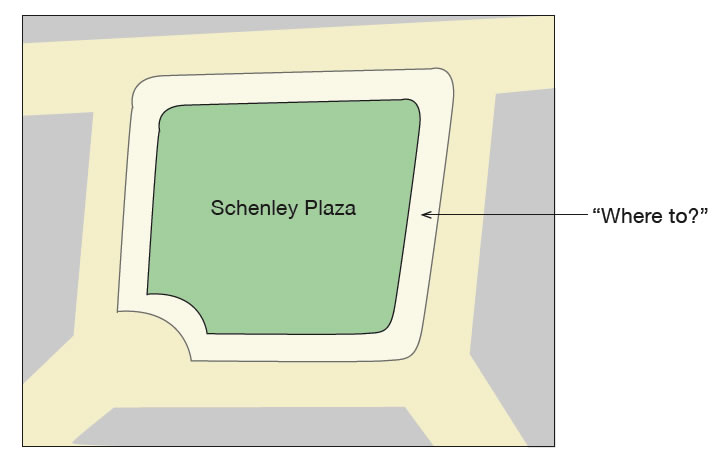User needs:
People at Schenley Park:
- Have some free time
- Do not have a specific agenda
- Are looking for something to do
- Want to enjoy Pittsburgh
What does "where to?" provide?
“where to?”
- Points to events happening later that day in the Burgh
- Gives information about when the event will occur
- Informs users about how many others are going to the event
- Tells visitors how far they need to travel for an event
- Provides directions if needed
DESIGN CONSIDERATIONS
We drew inspiration from design principles for large-scale ambient displays proposed by Vogel & Balakrishnan (2004). Among these:
- Calm Aesthetics- Ambient displays provide information in the user’s periphery and are typically placed in a permanent location becoming part of their environment
- Comprehension - An interactive display should reveal meaning and functionality naturally
- Notification - cues such as user’s walking speed and direction, gaze,conversation, and proximity to the display could be used to determine the interruptibility tolerance of a potential user
- Short duration, fluid use - This suggests tasks for quick information queries rather than involved activities
- Immediate usability - regular inhabitants of the space may also discover
functionality vicariously, by observing other users

 Research
Research Synthesis
Synthesis Design
Design Solution
Solution